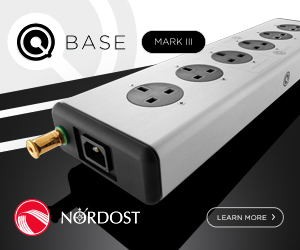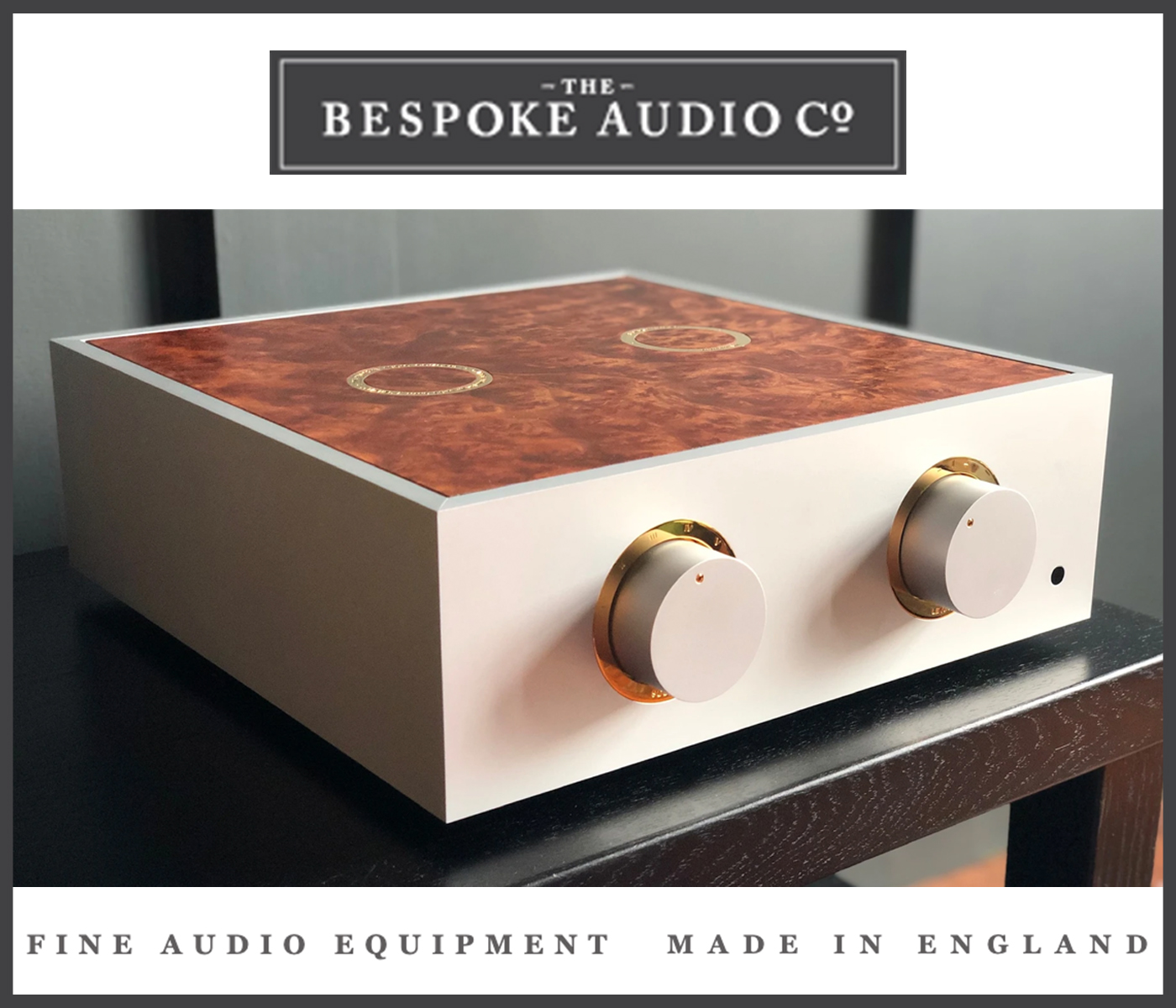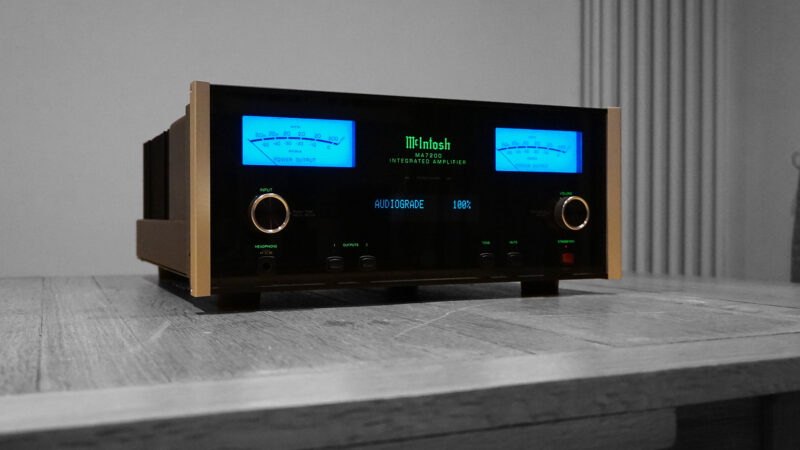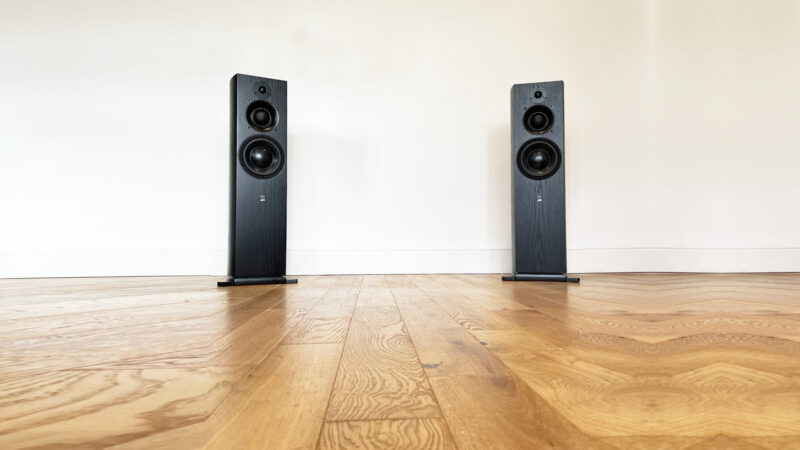Designing a flagship product is in many ways a purer concept than building models further down your range, because the compromises you typically make for the latter to keep costs down are minimised, leaving you with the single aim of creating something for ultimate performance, without exception.
For 45 years Danish audio giant Dynaudio has been active in all areas of loudspeaker design, pushing the envelope with its top flight models which have brought trickle down tech to its more affordable offerings, earning the brand a respected reputation across the domestic, studio and automotive audio industries.
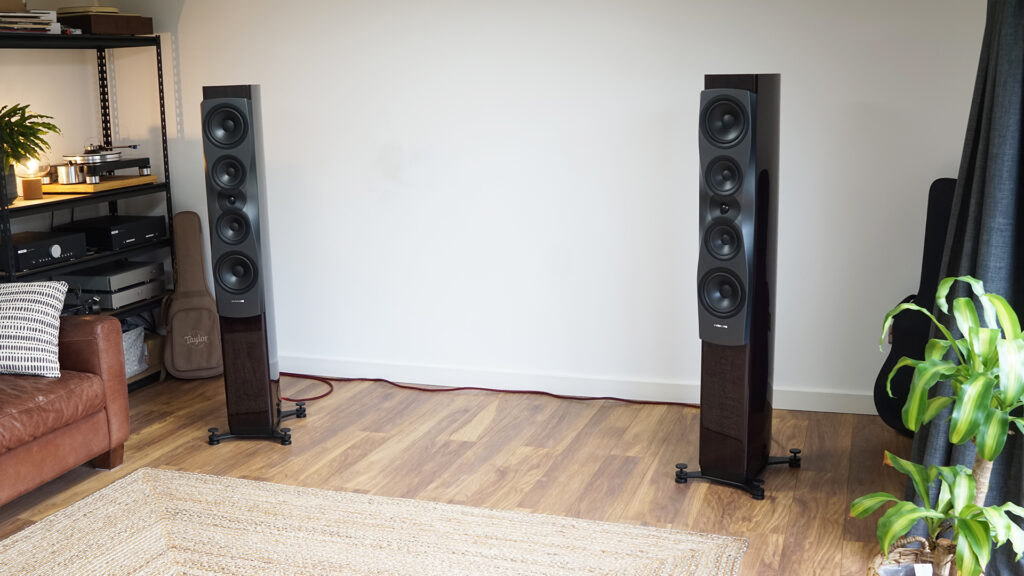
Our test model Confidence 50s came in ruby wood high gloss finish, with metalised midnight, smoke and blonde wood also available
Dynaudio isn’t (and never has been) motivated by drastic changes in direction that lose trust with listeners, which is why its drive units and cabinet designs are as recognisable today as they have been for decades, with each generation bringing refinements while retaining the company’s DNA (as is perfectly illustrated by the Heritage Special model that blends traditional styling with cutting edge developments). Think of this as a “if it ain’t broke, improve it” mantra that’s more about iteration, than radically going back to the drawing board with each new product.
Mission to Jupiter
A landmark moment in the company’s recent history which sets the scene for this review was the creation of its industry leading Jupiter testing facility at its Skanderborg HQ, bringing significant R&D advances to its understanding of real world listening environments.
This facility has driven the development of all current Dynaudio models, with the Confidence range now representing the pinnacle of the company’s loudspeaker offering. At the top of the line-up sits the Confidence 60, which is essentially a beefed up iteration of the Confidence 50 on test here and costs £36,500 in standard finishes. At £24,300 the Confidence 50 therefore costs considerably less than the 60, with the Confidence 30 (£17,500) further down the range sporting one less drive unit and the Confidence 20 (£9,600) flying the flag as the standmount model of the range.
While these prices clearly represent high-end audio, many readers may remember Dynaudio’s now retired Evidence range costing tens of thousands more, however thanks to Dynaudio’s significant investment in Jupiter, its engineers have been able to reach Evidence levels of performance at a significantly lower price point.
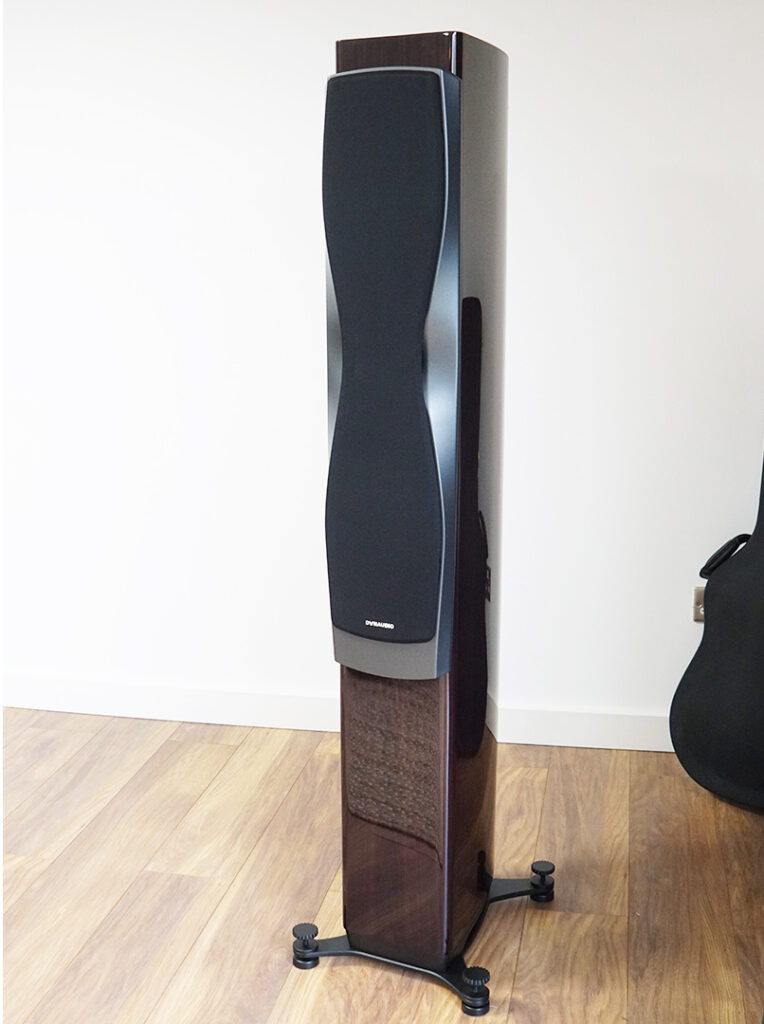
Contoured magnetically attached grill flows along the front baffle’s curved lines, making the Confidence 50 very easy on the eye
Full beam
The Confidence 50 is a five driver three-way design that’s implemented via an extended D’Appolito driver configuration, with two midrange units flanking a central tweeter, which are then flanked by two bass drivers.
Its 180mm bass and 150mm midrange drivers are Dynaudio’s own NeoTec designs, formed from its familiar Magnesium Silicate Polymer (MSP) material into a single woofer that includes the central radiating domes. The long-throw bass drivers use 0.5mm thick MSP and feature copper voice coils with multi-layer fibreglass voice coil formers, large high-grade Neodymium vented magnets and Nomex fabric suspension.
The midrange units employ aluminium/copper voice coils and a lighter grade of MSP at 0.4mm thick. Contrasting the bass drivers’ rolled rubber surrounds the midrange cones’ outer edges sport Dynaudio’s Horizon surround technology, which follows the cone’s shape, increasing the effective playing area and aiding more even sound dispersion.
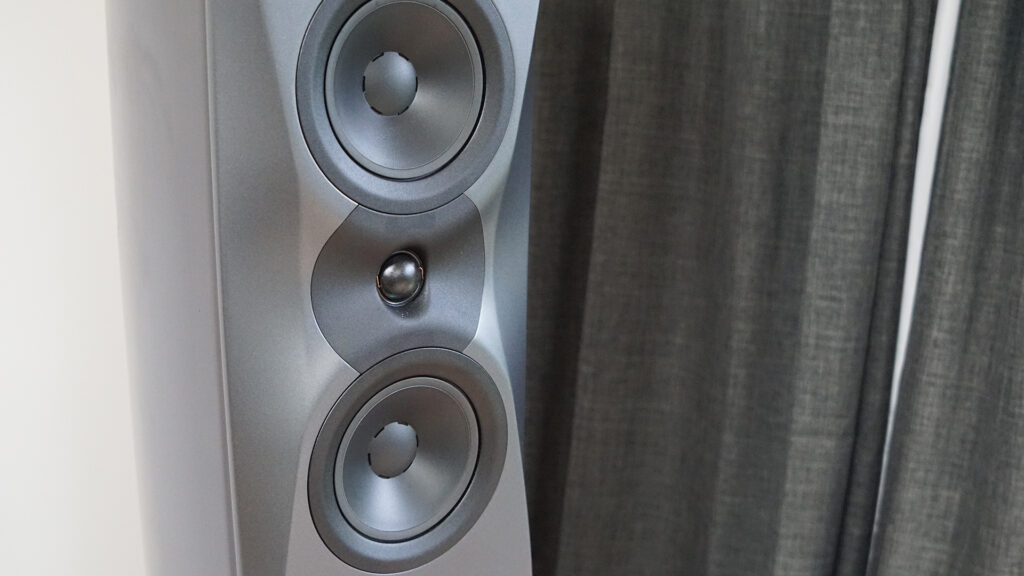
Midrange drive units with chamfered ‘Horizon’ surrounds orbit a 28mm Esotar3 tweeter that’s nestled within a sculptured DDC waveguide lens, for optimum sound-beaming. The recessed slots at the centre of the drive units attach the cone to the voice coil former
Dynaudio describes the Confidence range’s 28mm soft dome Esotar3 tweeter as the finest it’s ever developed. This also comes fitted with the brand’s now standard Hexis inner dome, which helps control high-frequency breakup modes and aid more even dispersion.
What’s also crucial to the Confidence 50’s design is how it’s been engineered to control the sound as it leaves the loudspeaker, referred to as sound-beaming. This is achieved via Dynaudio’s Directivity Control (DDC) lens that is precision sculptured into a carefully contoured waveguide shape as part of the tweeter surround and front baffle, which then extends to the baffle’s sides. Controlling the sound’s path in this way helps to minimise floor and ceiling reflections, while ensuring even dispersion horizontally, to benefit sound-staging and imaging. To craft these curves with such precision while also ensuring the front baffle remains rigid and acoustically inert meant sourcing the right material. Step forward Compex, formed from hardened foam that’s ten times more expensive to produce than MDF, underlining Dynaudio’s uncompromising approach to the Confidence range.
A downward firing bass port is also on hand for low frequency delivery, which exhausts against the integrated outrigger plate’s top surface and vents via side-firing cutouts at the bottom of the cabinet. This allows greater flexibility for positioning than rear ported speakers which are much more sensitive to rear walls. It also keeps the air-gap consistent by firing against a dedicated surface that’s part of the speaker, rather than directly against a floor which would be influenced by surface material and a varying air gap that’s dependant on feet height.
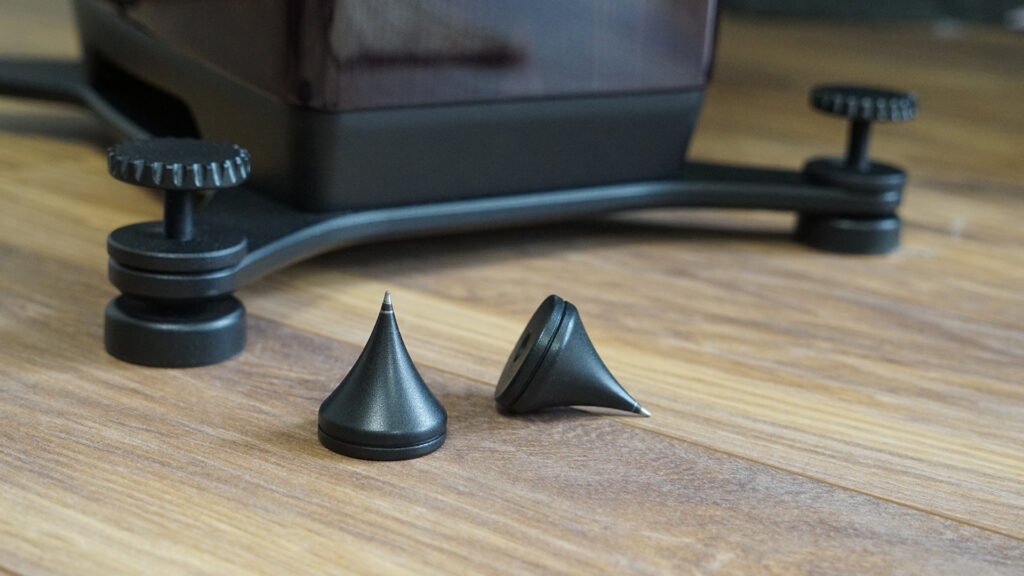
Adjustable feet bolt through extended outriggers, with a choice of pads or cone spikes. Note side-exiting air gap for the down-firing bass port
Fifty and slender
Measuring 1557 x 218 x 399mm (HWD), you’d be forgiven for expecting the Confidence 50 to be a fairly noticeable house guest, but in their beautifully finished flesh, these speakers have a canny way of blending in. This is in part due to their curved corners, sculptured front grill and stunning finish that you’ll be proud to display, and also because much of their volume is accounted for by their depth (and we rarely view our loudspeakers side-on). At the rear they measure less than 10cm across, with a profile architecture that’s reminiscent of New York’s Flatiron Building in reverse.
At almost 50kg each the Confidence 50 feels extremely solid and well made, while being just about manageable to manoeuvre around without needing extra muscle. The supplied spiked cones and optional padded feet make levelling up a doddle from above, making reaching for hex bolts at awkward angles a thing of the past.

Viewed side-on highlights the speaker’s 339mm depth and extended composite front baffle, housing its five drivers. Outrigger steel base plate ensures a stable footprint
Performance
A claimed 87dB sensitivity and 4 ohm impedance suggest the Confidence 50 welcome a healthy dose of clean wattage, and hooked up to my Musical Fidelity M6 pre/power amplifiers, fed by Russ Andrew’s 8PR Kimber speaker cable confirms my suspicions. In many ways the Confidence 50 sound typically Dynaudio by being balanced, neutral and organic in nature, but what sets them apart from lesser Dyns is you simply get more of these attributes, by the bucketload.
With Jeff Buckley’s 1994 Grace LP spinning on my VPI Prime 21‘s deck with Benz Micro ACE SH pickup and Primare R35 phono stage completing the vinyl system, the Dynaudios’ delivery is simply stunning.
The title track is laden with dynamic swings and layers of delicacy as it trades grand crescendos with jangly guitar loops and pounding percussion. For a loudspeaker to be able to unpick all of this and present it evenly is a challenge in itself, but for this to be done with such precision while maintaining the pure emotion and hypnotic energy of the music is what elevates good speakers to exceptional levels. Gary Lucas’s sublime guitar hook is presented with delicious timing and sustain within one of the widest soundstages I’ve experienced, while Buckley’s astounding vocals and ethereal backing strings sound all encompassing and multi-layered.
The follow up track Last Goodbye sounds just arresting, as its opening bars announce the song’s arrival with levels of scale and weight I’m not used to hearing in my 7 x 5m listening room.
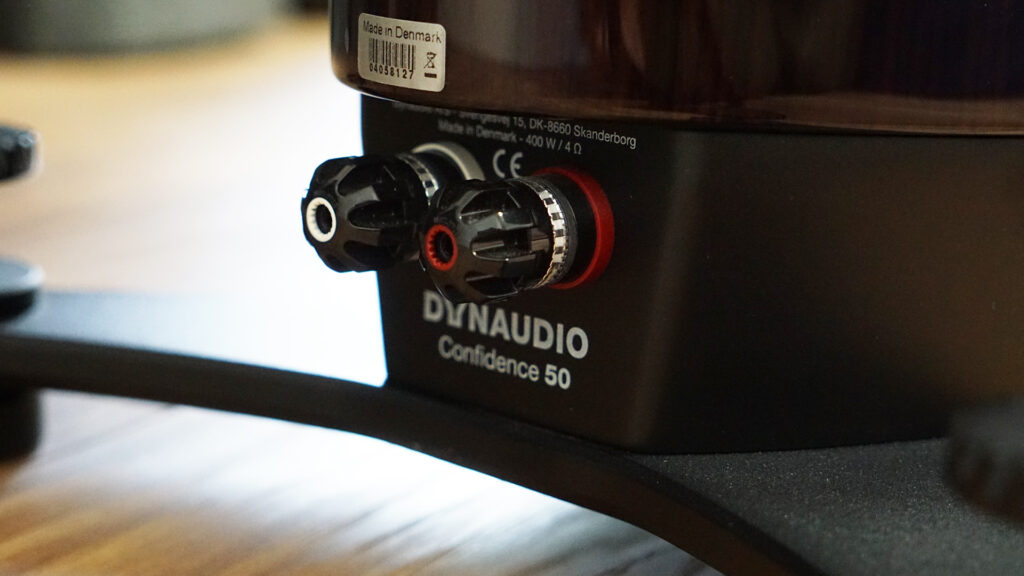
Only a single set of top quality speaker cable terminals are on offer as is the Dynaudio way, denoting the speaker’s intentionally simple crossover design
Experimenting with positioning reveals the Dyns to be less sensitive to placement than many high-end loudspeakers, especially when finding their ideal placement for optimum imaging. Firing down my room’s long axis, with them standing 70cm in from a rear wall, spaced 2m meters apart with a slight toe in strikes a perfect balance. With an internal height of around 2.2m, my room can be sensitive to ceiling reflections, especially from a speaker that’s over 1.5m tall. However the Confidence 50’s height allows its tweeter to be positioned right in the ear-level-when-seated sweet spot at 1065mm high. This and the DDC lens combine to work their magic, ensuring my room’s acoustics remain nicely in check with unwanted reflections kept at bay, as Buckley’s band’s notes arrive sounding natural and uncoloured.
Moving on to Ben Howard’s Nica Libres At Dusk from his 2018 Noonday Dream LP further highlights how good these speakers are at digging deep into the mix to create atmospherics most loudspeakers can only dream of. The way the percussion is conjured centre stage while the looping slide guitar and strings escape my room’s boundaries to extend from well beyond my rear wall and soar far above my ceiling is utterly convincing.
Parenthood
Slowing things down with Olivia Vedder’s My Father’s Daughter track streamed at 24-bit/88kHz from my legacy Primare NP30 network player illustrates how the Confidence 50 is in many ways the ultimate expressions of Dynaudio’s craft with how natural, unforced and pure the music sounds. Vedder’s vocals are presented with such realism it’s as though I’m taken beyond the studio recording and into the studio itself, experiencing her performance first hand and not via a first class reproduction. Bass notes sound just as satisfying, with the Dyns reaching down to their claimed 35Hz with layers of texture in every note as they land with levels of authority and control few domestic speakers I’ve heard come close to mustering.
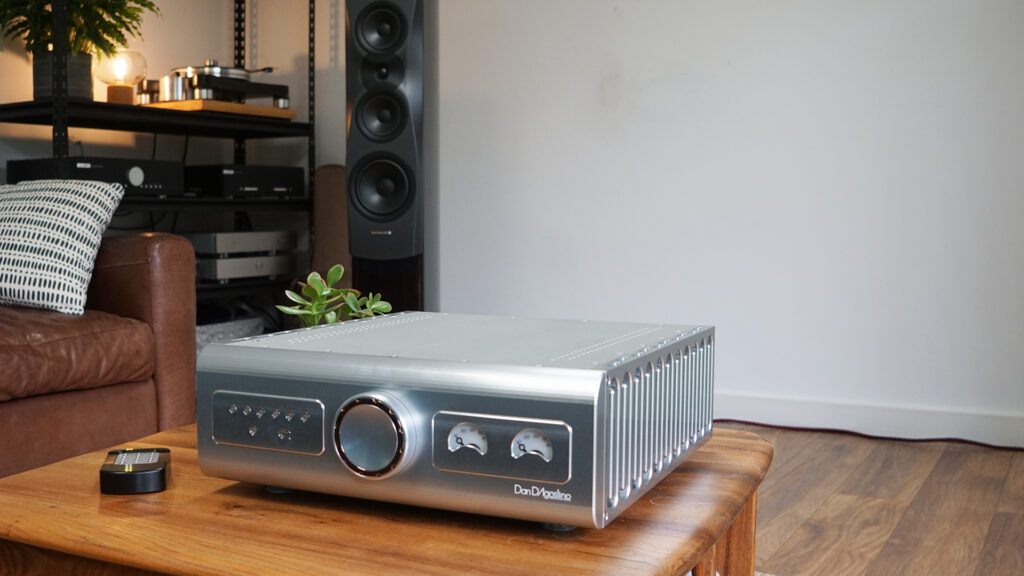
D’Agostino Progression integrated is an ideal match for the Confidence 50, with 400W per channel on offer into 4 ohms
Having been my reference units for close to a decade, it makes perfect sense to see how far the Confidence 50 speakers can take the Musical Fidelity pairing before upping the ante, to see how they respond to more luxurious levels of amplification.
Despite being the most affordable way into D’Agostino’s revered range of amps, at £23k the brand’s Progression integrated still represents one of the most refined analogue amplifiers on the market and is perfectly priced to match the Dynaudios, while continuing to serve up healthy levels of power.
Revisiting Olivia Vedder’s track with the Progression installed allows the Dynaudio’s to reach further into the track’s atmospherics and lay down greater levels of space and air around the vocals, which hang in the air with extra degrees of refined sustain, while the accompanying piano notes sound more finessed.
It’s clear the Confidence 50 like to take the listener into the performance, and hearing Neil Young’s 1971 Live At Massey Hall recording at 24-bit/192kHz via the Dyns is a front row seats experience. Perhaps due to the recording gear at the time or the analytic mastering that’s been applied to this hires version, even on the best systems Young’s vocals can sometimes seem a little overly sibilant. Thankfully the Dyns keep everything sounding as it should, for example on See The Sky About To Rain, Young’s closely mic’d voice is perfectly framed, with the fragility of his natural vibrato moving through the air as delicately is a leaf on a soft breeze when needed, setting the scene for the song’s contrasting finale. The ring of the piano notes are captured with equal measures of authenticity as they reverberate within the instrument’s body with natural timbre, again underlining how good these speakers at stripping away any boundaries to take you closer to the actual performance.
In summary
There are few domestic loudspeakers in existence with the imaging and sound-staging abilities of the Confidence 50. And what also makes them such an ultimate package is how they’ve been voiced and engineered for real world listening and enjoyment.
Many speakers at this price can sound ruthlessly revealing, while being equally demanding of their partnering electronics and while the Dynaudios will revel in the best partnering kit you can offer them, they are not an unforgiving or an elitist speaker, but you’ll need to go some way before you’ll get anywhere near their performance ceiling, they really are that good.



